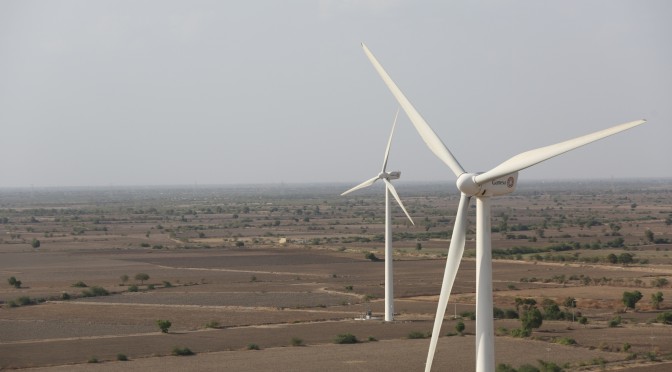The wind power sector is ready to work with the government to realize the target of 175 GW renewable power, of which 60GW is wind power, by 2022, but first wants a proper regulatory framework in place. Sarvesh Kumar, chairman of the Indian Wind Turbine Manufacturing Association (IWTMA), in an interview with Mint, discussed various issues plaguing the sector, including how goods and services tax (GST) rates could impact the wind sector and how offshore wind power projects could be a reality by 2020. Edited excerpts.
In January 2017, the Central government organized a national-level consultative meeting and there were talks about issues plaguing the wind sector such as people taking land and then sitting over it.
I don’t think we are sitting over land at all. They (companies that have got projects) may be sitting on allotments not on lands. The suggestion was that if a company is not doing the project then the allotment should be cancelled so that it can be given to someone else. Today we are short of our targets. Perhaps, if we have to do 6,000MW a year, we may not have enough land for that. We have to rush, procure it and implement the project.
Do you want the government to come out with 4,000-5,000 MW wind power projects in one go rather than 1,000 MW tenders?
The government wants everything to be procured through competitive biding. We are for it. We want electricity to be procured under competitive bidding. The government started with 1,000 MW—it was the first initiative. We said 1,000 MW is not enough. You come for 5,000-6,000 MW. You have given us a target to do 6,000 MW by 2022— which means there has to be capacity addition of 6,000-7,000 MW every year. Keeping that in mind, they should come with 5,000-6,000 MW competitive bidding. The industry is ready for those challenges. Whatever the tariff, we are ready to work with that.
What are the other challenges the sector is facing?
The challenge is power evacuation. Having a green energy corridor is a major challenge.
Do you see India achieving a target of 60 GW of wind power by 2022?
First of all the industry is ready… if we don’t have the regulatory framework in place then obviously we may fall short of it. As of now, the target for the just finished financial year was 4,000 MW, and we have achieved 5,400 MW.
How far do you think India is from harnessing its offshore wind potential?
India has 7,500 km of coastline. But offshore has its own challenges. First of all, it has cost involvement… studies need to be done. But if you really see, the industry has the technology for offshore and there is no doubt about it. Most of the European companies are placed in India .They have already done a number of (offshore) projects in Europe. So as far as tech is concerned, we have that. The question comes about the time when the first project is going to be implemented. In my personal opinion, by 2020 we should be ready for offshore.
How do you see GST rates impacting the wind sector?
We have made a request to the ministry (of new and renewable energy). At the end of the day we don’t want the end consumer to be burdened. We requested a zero GST rate, and if we get that then there’s nothing like it. But if a 5% rate is levied, the industry will happily accept it. If 5% is there, tariff is likely to go down by 10-15 paise (per unit), but if the rate is 12%, it will go up 20-25 paisa, and at 18%, it may go to 40-50 paisa.
What do you want for the wind sector?
We would like to be given a platform to export as much as possible. In order to export we need lines of credit. The cost of shipping is very high. Thus if Europe can give the same product at the same price or a cheaper price, then one obviously won’t get the benefit. As far as markets are concerned, Europe, US, South Africa and Latin America are good markets for us.

